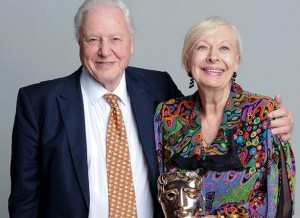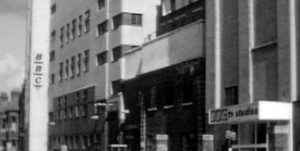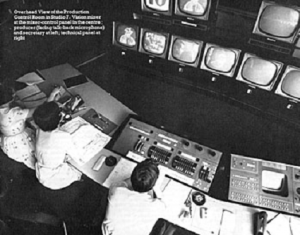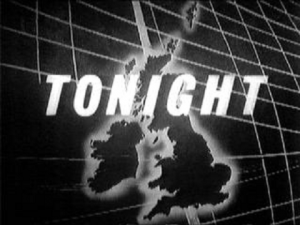You start off doing one thing, and somehow other stuff just comes along……
When I started the tech-ops site, it was meant to be a home for picture and stories that might not otherwise ever be shown or told. A few years down the line came lunches – see other posts – and then the tech-ops mailing list. In just a few months there were over 1000 posts, many of them telling new (old) stories of how life really was for those who worked for the BBC. Not the political rows or the controversial current affairs, but life as it was really lived by those who were there during the greatest days of the BBC.
I asked if someone could collate the threads from the first few months of the mailing list, and Alec Bray offered to help. He did an amazing job, and here are the results. He wrote a background piece for many of the sections which are below, followed by a link to the conversations from the list….
++++++++++++++++++++++
Ambiophony
Background:
The ambiophony system installed in Television Centre Studio 4 followed the design described by Vermeulen (“Stereo-Reverberation”, Philips Technical Review 1956,17,9).
The object of the equipment was to provide artificial reverberation in the studio itself instead of adding it to the microphone signal by means of a separate echo room or reverberation plate.
++++++++++++++++++++++++++++
Biddy Baxter and Blue Peter
Background
“Blue Peter” was first aired on 16 October 1958. It had been commissioned to producer John Hunter Blair by Owen Reed, the head of children’s programmes at the BBC, as there were no programmes in existence that catered for children aged between five and eight.
The “Blue Peter” is used as a maritime signal, indicating that the vessel flying it is about to leave, and Reed chose the name to represent ‘a voyage of adventure’ on which the programme would set out. Hunter Blair also pointed out that blue was a child’s favourite colour, and Peter was the common name of a typical child’s friend.
++++++++++++++++++++++++++++
Life at Lime Grove
Background
Lime Grove Studios was originally a film studio built by the Gaumont Film Company in 1915. The BBC took it over in 1949 as its main production base. Though Television Centre took over that role in the early sixties, Lime Grove was used by the BBC until 1991. It was demolished in 1993 in order to build homes – Gaumont Terrace on Gainsborough Close.
++++++++++++++++++++++++++
BBC Tech Ops Interviews
++++++++++++++++++++++++++
Doctor Who Stories
Background
Doctor Who first appeared on BBC1 television on Saturday, 23 November 1963. It has turned into world wide cult sci-fi viewing for millions.
++++++++++++++++++++++++++
Chapman Hercules and other Camera Cranes
Background
In the years when cameras were large and much of the BBCs drama and light entertainment were made in studios, the BBC would from time to time rent one of two very large camera cranes. The Chapman Hercules was mainly used on exterior locations for films such as Lawrence of Arabia. In the studio it was seriously cumbersome but took the camera far higher than anything else available. Another crane, known at the BBC as the Transatlantic, was slightly smaller, but had the advantage of being more flexible because of its front and rear steering. It was last seen as a main exhibit at the Museum of the Moving Image in London, now long closed.
++++++++++++++++++++++++++
BBC2 Opening Night
Background
BBC2 was the third British television station to be launched (starting on 20 April 1964), and from 1 July 1967, Europe’s first television channel to broadcast regularly in colour. It was originally envisaged as a home for less mainstream and more ambitious programming.
++++++++++++++++++++++++++
525 lines 60 cycles
Background
Technical stuff now. The US and one or two other countries broadcast in standard definition on 525/60. The UK and much of the broadcast in 625/50 – 625 lines of picture in two interlaced fields of 50 per second, making 25 frames per second.
++++++++++++++++++++++++++
Staff Lists and Staff Numbers
BBC TV Tech Ops staff lists … and everyone had a staff number …
++++++++++++++++++++++++++
Alexandra Palace television station
in 1936 Ally Pally became the home of the world’s first regular public “high-definition” television service, operated by the BBC. The original studios ‘A’ and ‘B’ still survive in the south-east wing with their producers’ galleries and are used for exhibiting original historical television equipment.
++++++++++++++++++++++++++
“An Adventure in Space and Time” – Errors
“An Adventure in Space and Time” was a British television docudrama commissioned to celebrate the 50th anniversary of the science fiction series “Doctor Who”. It was supposed to tell the story of its creation, but unfortunately contained lots of factual errors, especially on the technical side.
++++++++++++++++++++++++++
With the Beatles
Many of us worked with The Beatles – especially at the height of Beatlemania. This page mainly dicusses the CAMERAS that were used!
++++++++++++++++++++++++++
Cameras, Mounts and Cables
Following on from the discussion of the Beatles and the studio cameras used, here is some more about cameras, their mountings and cables from a variety of locations.
++++++++++++++++++++++++++
Colour-equipped Studio but B&W Transmission
If a studio was equipped for colour recording, would all programmes from that studio have been made in colour? Would some programmes have been made in monochrome before the start of regular clour broadcasting?
++++++++++++++++++++++++++
More Crew Christmas Cards
Crew 3 and crew 9 Christmas Cards …
++++++++++++++++++++++++++
Editech
Ampex released a colour machine which could perform edits electronically, and called this the “Editech” system: the idea was that a production could play back a scene and go directly into “Record”.
++++++++++++++++++++++++++
EQ = equalisation
Background
In sound recording and reproduction, equalization is the process commonly used to alter the frequency response of an audio system using linear filters. Equalizers, “adjust the amplitude of audio signals at particular frequencies,” so they are, “in other words, frequency-specific volume knobs”.
++++++++++++++++++++++++++
Potential Tech Ops recruits EXAM Questions
What interview or exam questiosn would you present to potential Tech nical Operator recruits>
++++++++++++++++++++++++++
Fanny v Delia
Before the days of “celebrity chefs”, some chefs became celebrities.
++++++++++++++++++++++++++
General Memories
++++++++++++++++++++++++++
The Greenwood Theatre
The BBC moved into the theatre in 1979. The first programme was made there on 23rd September 1979.
++++++++++++++++++++++++++
In The Gallery
Background
++++++++++++++++++++++++++
Induction Courses
Background
The BBC ran week-long induction courdes for all technical staff. These were usually based at “The Langham”, at this time (1960s-1970s) used as offices by the BBC – as near to Broadcasting House as possible!
++++++++++++++++++++++++++
Mike Booms
The merits (or otherwise) of different types of Microphone booms – and stories related to the use of mic booms.
++++++++++++++++++++++++++
Mogul – Troubleshooters
Background
The BBC’s “Mogul”, retitled “The Troubleshooters” after its first season, followed the globe-trotting exploits of Peter Thornton, Australian field agent for Mogul Oil, run by the hard-nosed Brian Stead.
++++++++++++++++++++++++++
Mole Cranes
There were probably more stories told about the Mole Richardspon camera crane than about any other single piece of equipment …
++++++++++++++++++++++++++
Mother
Background
Joan Marsden was a BBC floor manager known to all as ‘Mother’ (or, to a select few as ‘mum,’) (including prime ministers!).
OK, we are into Mother stories now!
++++++++++++++++++++++++++
Nylon Overalls
In 1968 the BBC provided a few nylon overalls for Tech Ops personnel …
++++++++++++++++++++++++++
Outside Broadcasts, Mast, Aerials and more …
Including a “Jazz 625” picture and Dinky Toys …
++++++++++++++++++++++++++
“Our World” – 1967
Background
“Our World” was the first live, international, satellite television production, which was broadcast on 25 June 1967. Creative artists, including The Beatles, opera singer Maria Callas, and painter Pablo Picasso — representing nineteen nations — were invited to perform or appear in separate segments featuring their respective countries. The two-and-half-hour event had the largest television audience ever up to that date.
Today, it is most famous for the segment from the United Kingdom starring The Beatles. They sang their specially composed song “All You Need Is Love” to close the broadcast.
see also:
Our World – All You Need Is Love (2)
for info received after this page was initially published.
++++++++++++++++++++++++++
Personalities
Including
- Jim Atkinson
- Bimbi Harris
- Bob Coles
- Christopher Barry
- Des Browning
- Rick Gardner
- Dickie Chamberlain
- Joe Waters
- Mike Jones
- David Coleman
++++++++++++++++++++++++++
Picture Quality
CPS Emitron versus 4.5 in Image Orthicons – and other aspects of picture quality.
++++++++++++++++++++++++++
“Play School”
Background
“Play School” was a British children’s television series produced by the BBC which ran from 21 April 1964 until 11 March 1988. Devised by Joy Whitby, it accidentally became the first ever programme to be shown on the fledgling BBC2 after a power cut halted the opening night’s programming (and later it became the first children’s programme to be shown in colour by that channel).
++++++++++++++++++++++++++
50 years of “Play School”
A collection of photos recording a gathering to celebrate 50 years of “Play School”
++++++++++++++++++++++++++
Post Programme Parties
“That’s a wrap … ”
++++++++++++++++++++++++++
More stories of Pres A and Pres B
Background
On the fourth floor of Television Centre, in the central wedge between TC3 and TC4, a control room on each side of a central corridor each looked into a studio, the two built side by side. These were presentation studios and were known by all as Pres A and Pres B. T
++++++++++++++++++++++++++
Programme stories
Including:
- “Vendetta”
- “Girls of Slender Means”
- “How It Is”
- “Twice a Fortnight”
amongst others …
++++++++++++++++++++++++++
HM The Queen Visit to TVC – 1961
Her Majesty the Queen visited Television Centre on 2 November 1961 to mark the 25th birthday of the Corporation. Her Majesty met the cast of “Crackerjack” with Eamonn Andrews.
++++++++++++++++++++++++++
Stores Stories
Had to go to Stores during the rig to get stuff – and camera tape.
++++++++++++++++++++++++++
Studio Tanks
Some studios had tanks which could be filled with water to film or telerecord action on the waves.
++++++++++++++++++++++++++
Tales of the Riverside
In 1954, Riverside studios were acquired by the BBC for its television service. The studios was in continuous use until the early 1970s, the rooftop camera position providing one of the highlights of the annual University Boat Race each Easter Saturday.
(PS remember “Tales of the Riverbank”?)
++++++++++++++++++++++++++
Tape Loops
++++++++++++++++++++++++++
The Art of Direction
The BBC used to have training programmes for Directors: the practical Production Excercises were an opportunity to crew down to give experience to the newer members of the crew. Not all directors seemed to benefit from the experience …
++++++++++++++++++++++++++
The Developing Camera Shot
The camerawork of the Tech Ops crews on both drame ands LE shows aimed to complement the performances of the artisites (the talent) and to enhance the whole production.
++++++++++++++++++++++++++
“The Next Tonight will be Tomorrow Night…”
++++++++++++++++++++++++++
Top of The Pops
“Top of the Pops” began on New Year’s Day 1964 in Studio A on Dickenson Road in Rusholme, Manchester, then moved to London, firstly to TC2 and then to LG Studio G.
Many inserts to TOPT have been lost, but one – David Bowie “The Jean Genie” – has been found!
++++++++++++++++++++++++++
TVC In Words and Pictures
Irvine Brooks found a couple of his old childhood books which featured ’Television’ … These books had an amazing effect: although Irvine already knew what he wanted to do for a career by the age of 7, these books helped preserve his enthusiasm.
++++++++++++++++++++++++++
Vinten Cranes (Motorised, Heron and Peregrine)
++++++++++++++++++++++++++
VT Entertainment Tapes
VT collected together the faux-pass and slips, miss takes and mistakes, and made up each year a Christmas entertainment tape.
- “White Powder Christmas”
- “Good King Memorex”
- The Grant Watkins Exhibition tape
++++++++++++++++++++++++++
VT Stories
Background
The 2-inch ‘quad’ Ampex (and RCA) machines were housed (originally) in the basement at the BBC Television Centre, the idea being that the cable runs to each studio were kept as short as possible.
++++++++++++++++++++++++++
VT Tea
Louis Barfe suggested the idea of a VT Tea mug for Tech Ops. Gary Critcher suggested that Tech Ops photograph the mugs in as many far flung locations as possible.
++++++++++++++++++++++++++
Warm Ups
Memories of audience warm-up routines. Get the ausience in the right mood to laugh at the appropriate times – no cue cards for thw audience in the 1960s at the BBC.
Wind Ups” href=”http://tech-ops.co.uk/next/?p=2881/”> What people said……
++++++++++++++++++++++++++
TO Training at Wood Norton Hall (Evesham)
Background
After the Second World War, war, Wood Norton Hall became the home of the BBC Engineering Training Department. During the Cold War it was designated as a broadcasting centre in the event of a nuclear attack. The BBC retained purpose-built facilities in the grounds for technical training after selling the Hall, which became a hotel.
++++++++++++++++++++++++++
“Year of the Sex Olympics”
Background
“The Year of the Sex Olympics” was a 1968 television play made by the BBC and first broadcast on BBC2 as part of Theatre 625. It starred Leonard Rossiter, Tony Vogel, Suzanne Neve and Brian Cox.
++++++++++++++++++++++++++
“Z Cars”
Background
A drama series centred on the work of mobile uniformed police in the fictional town of Newtown, based on Kirkby, Merseyside. It started in January 1962 and ran until September 1978.
++++++++++++++++++++++++++
Zoom Lenses
Background
A zoom lens is a mechanical assembly of lens elements for which the focal length (and thus angle of view) can be varied, as opposed to a fixed focal length lens.
++++++++++++++++++++++++++







